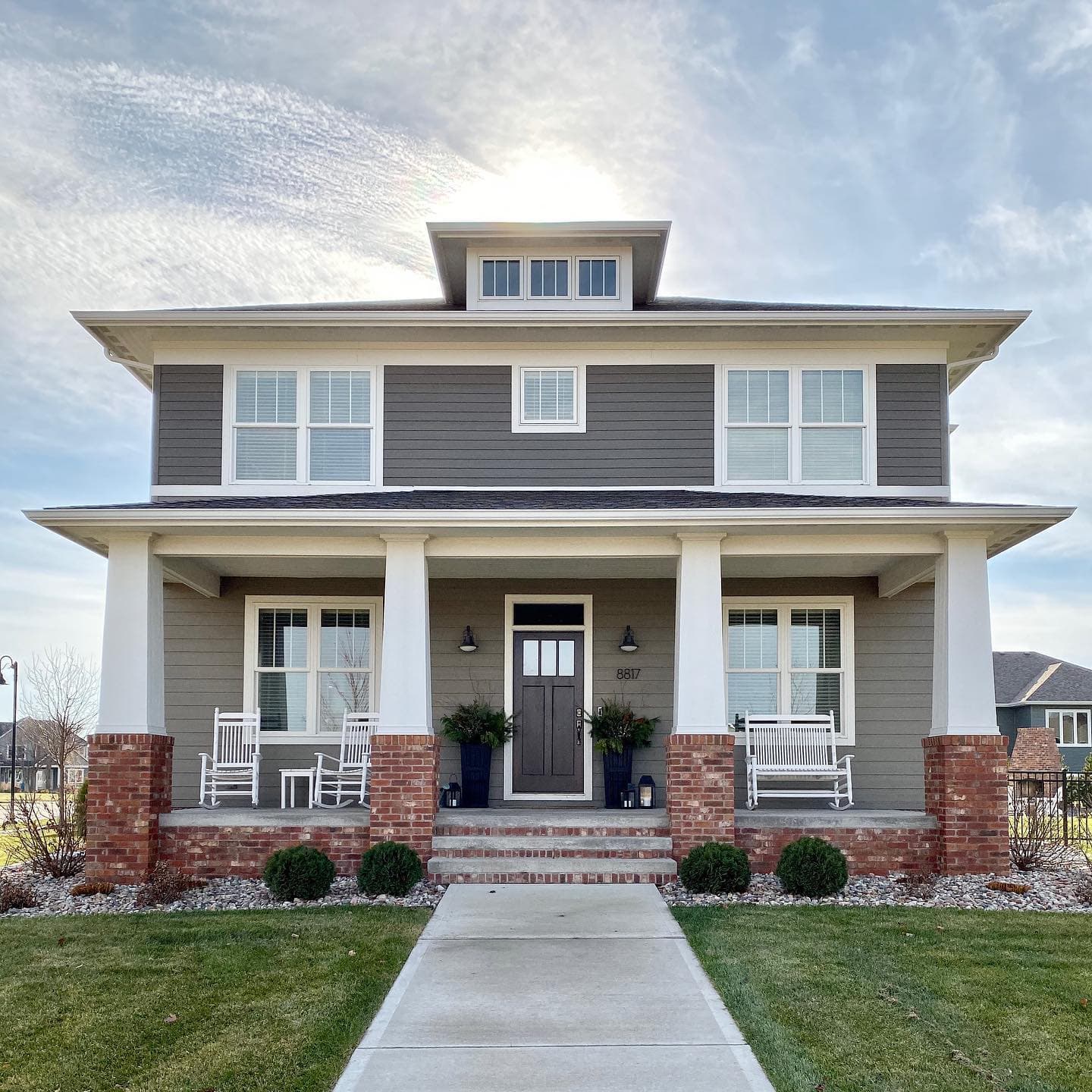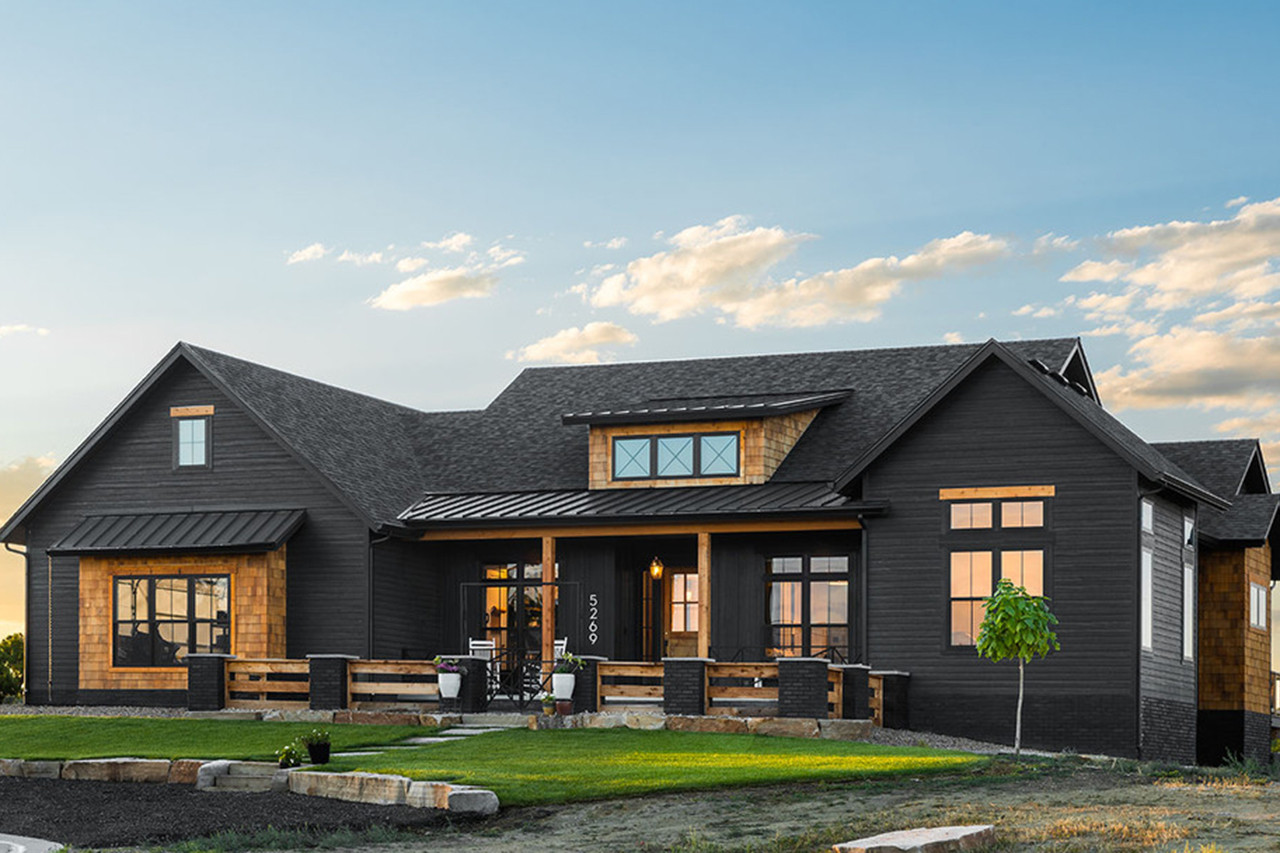Breaking Down the Sustainability Features of a craftsman style house
Wiki Article
The Function of Arts & & Crafts Architects in Elevating Architectural Services in Residential Style
Arts and Crafts architects substantially affect residential design via their commitment to workmanship and sustainability. They focus on handmade details and all-natural materials, which boost both appearances and area identity. By involving customers in the design process, these architects create special living areas that resonate with individual tastes. This technique questions regarding the future trajectory of domestic architecture and its possible effect on area characteristics. craftsman style house. What exists ahead for this timeless style viewpoint?
The Principles of Arts and Crafts Architecture
The essence of Arts and Crafts architecture hinges on its commitment to workmanship and simpleness. This architectural activity emerged in the late 19th century as a feedback to industrialization, stressing the value of handcrafted information and all-natural materials. The principles of Arts and Crafts architecture focus on performance and consistency with the environment. Frameworks usually feature low-pitched roofs, wide eaves, and revealed rafters, advertising a feeling of unity with nature.Artisans played a substantial duty in this design, commonly integrating ornamental components like tarnished glass, ceramic tiles, and woodwork, which mirror local craftsmanship. The color combination tends to be earthy and controlled, enabling buildings to mix flawlessly into their environments. In addition, the style encourages open flooring plans and communal spaces, fostering a sense of togetherness. Generally, the concepts of Arts and Crafts architecture commemorate the beauty of simplicity and the significance of human link to both nature and neighborhood.

Sustainable Practices in Residential Style
While the demand for environmentally liable living remains to expand, sustainable techniques in property design have actually gained significant grip among architects and house owners alike. Architects are significantly including energy-efficient innovations and sustainable materials into their designs, intending to lower carbon footprints and improve power preservation. Methods such as easy solar design, environment-friendly roofing systems, and rain harvesting systems are ending up being typical components of contemporary residential architecture.Moreover, the choice of in your area sourced materials reduces transport emissions and supports regional economic situations. Emphasis on natural light and ventilation not only improves indoor air top quality yet additionally decreases reliance on artificial lighting and environment control systems. These sustainable techniques reflect a dedication to maintaining the atmosphere while providing homeowners with comfortable, effective living areas. As awareness of ecological issues expands, the integration of sustainability in residential style is positioned to come to be a specifying characteristic of modern architecture, led by the concepts developed by Arts and Crafts architects.
Customization and Personalization in Home Style
Customization and personalization in home style have become essential patterns in feedback to the growing need for unique living atmospheres that show specific tastes and way of lives. House owners increasingly seek to customize spaces that resonate with their individualities, causing a much more purposeful link with their living spaces. craftsman style house. This activity encourages architects to engage customers in the layout procedure, promoting partnership that assures the last end result personifies the home owner's visionAspects such as bespoke formats, customized materials, and tailored finishes permit for a diverse series of expressions in residential layout. Arts and Crafts architects play an essential duty in this advancement, highlighting craftsmanship and quality. Their concentrate on incorporating creative components with functionality warranties that each home is not only cosmetically pleasing however also distinctively suited to the occupants' requirements. This emphasis on customization boosts the overall residential experience, developing spaces that are both individual and enduring.
The Impact of Arts and Crafts Architects on Area Looks
As areas progress, the impact of Arts and Crafts architects significantly forms their aesthetic landscape. By highlighting handmade details, all-natural materials, and standard building and construction techniques, these architects develop homes that resonate with their environments. Their styles typically include neighborhood vegetations, appearances, and shades, promoting a feeling of consistency in between constructed environments and nature.In addition, the Arts and Crafts motion site here advertises community identification via architectural connection. By motivating home owners to embrace similar design concepts, areas develop a natural personality that boosts visual appeal. This building harmony not only enhances the aesthetic experience but also infuses a feeling of satisfaction among residents.
The focus on sustainability and workmanship in Arts and Crafts architecture lines up with modern-day worths, making these styles appropriate in contemporary setups. Ultimately, Arts and Crafts architects add considerably to the total beauty and cultural integrity of communities, leaving an enduring effect on their aesthetic tradition.

Future Patterns in Arts and Crafts Architecture
With an increasing emphasis on sustainability and personalization, future fads in Arts and Crafts architecture are poised to blend typical workmanship with modern innovation - craftsman style house. Architects are most likely to prioritize eco-friendly materials, utilizing redeemed timber and all-natural rock to improve the sustainability of property layouts. The integration of smart home innovation will certainly end up being typical, allowing for customized living experiences without endangering aesthetic integrityThe revival of artisanal methods will cultivate a restored gratitude for handcrafted components, such as bespoke cabinetry his explanation and custom ceramic tile job. Future styles might likewise mirror an emphasis on community-oriented spaces, motivating interaction and connection amongst residents. Exterior living locations will acquire prominence, seamlessly incorporating nature into the home atmosphere. As Arts and Crafts architecture advances, it will certainly remain to honor its origins while adjusting to contemporary requirements, creating harmonious areas that reflect individual worths and way of livings.
Regularly Asked Inquiries
What Inspired the Arts and Crafts Motion in Architecture?
The Arts and Crafts motion in architecture was inspired by a reaction against automation, highlighting handcrafted high quality, all-natural products, and a go back to typical workmanship, aiming to develop harmonious, useful spaces that commemorated artistry and originality.Just how Do Arts and Crafts Architects Collaborate With Customers?
Arts and crafts architects collaborate with customers through open dialogue, prioritizing individual needs and visual appeals. They emphasize workmanship and sustainability, promoting a partnership that incorporates the client's vision with the engineer's experience in style and materials.What Products Are Typically Made Use Of in Arts and Crafts Houses?
Usual materials in Arts and Crafts Resources homes include natural timber, rock, and block, stressing workmanship and natural aesthetic appeals. These elements produce a warm, inviting environment, mirroring the activity's devotion to quality and simpleness in layout.How Do Arts and Crafts Designs Boost Indoor Living Rooms?
Arts and Crafts designs improve interior home by advertising natural light, open flooring plans, and handcrafted information. These elements cultivate a warm, inviting ambience, encouraging a connection between citizens and their settings via thoughtful, useful visual appeals.What Are Some Famous Examples of Arts and Crafts Architecture?
Famous examples of Arts and Crafts architecture include the Wager Residence, Greene and Greene's work of art in California, and the Robie Residence by Frank Lloyd Wright. These frameworks display handcrafted information and consistency with nature, defining the movement's essence.Report this wiki page